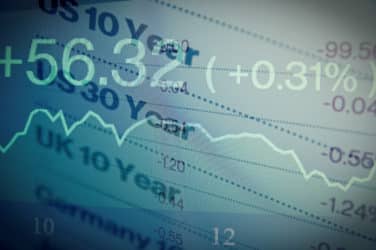Derivatives exchanges across the world achieved record breaking trading volumes in 2018 as market participants on the buy and sell side reacted to shifts in volatility and other risk factors. At the same time, established exchanges are seeking growth opportunities in the digital asset space, new venues are emerging, and initiatives to foster the integration of OTC and listed derivatives markets are advancing.
Against this backdrop, Marco Bianchi, Head of Futures Business Development at FlexTrade Systems, examines major trends, opportunities and challenges facing the buy side, and the demand for sophisticated tools in this growing, but increasingly complex marketplace.
Q: Derivatives traded on futures and options exchanges across the globe hit an all-time record high of 30. 28 billion contracts, an increase in volume of 20.2 % over 2017, according to data from the Futures Industry Association (FIA). What stands out to you and what are some of the drivers of this growth?
Marco Bianchi: First, this growth points to the continued widespread adoption of futures and options for risk management and trading across asset classes and investment styles. By year end 2018, open interest in several global benchmark interest rates and equity index futures and options complexes achieved new highs. Growing open interest against a background of rising volumes generally points to greater adoption and more and more players coming into the space. Second, the growth rate of 20.2 % was the fastest since 2010, led by players in Asia-Pacific and Latin America. This shows the global nature of the overall growth, an important indicator of vibrancy for the international derivatives industry and a sign of expanding opportunities for market participants.
Q: What drivers are behind this global growth?
Marco Bianchi: Many different drivers were behind this growth, namely volatility spikes in connection with geopolitical events; market structure evolution such as the emergence of new and alternative benchmarks; regulatory developments such as MIFID II implementation and risks of US-EU divergence; significant macro factors such as uncertainty surrounding Brexit, the shift in central bank policy, the aftermath of U.S. tax reforms, and the uptick in friction over trade tariffs between the US and China. All of these factors generated ongoing needs to manage exposure and capture opportunities by accessing established futures and options liquidity pools across asset classes, fueling growth and expansion. Many of these factors continue to weigh over the markets in 2019.
Q: While the futures and options industry has grown organically, what role is innovation playing in listed derivatives?
Marco Bianchi: The listed-derivatives industry remains a dynamic and innovative marketplace. Innovation can be seen at multiple levels. First, there is innovation from established players in the form of expansion and enhancements to existing product complexes. Global exchanges regularly roll out new functionality such as innovative order types and wholesale trading practices to unleash further growth in established products. In other cases, product specifications are revised to simplify and increase spread trading opportunities. Some examples are the development of Trade At Settlement (TAS) markets in commodities, or the migration of ERIS Swap futures to CME with a revamped product design. Of course, exchanges also routinely roll out newly designed products in response to market trends or macro developments. A significant example from the recent past is the listing across emerging and established market venues of futures referenced to possible future alternatives to LIBOR.
Second, we are also seeing innovation in the form of lines blurring between OTC markets and listed derivatives, as evidenced by CME’s acquisition of NEX Group, a provider of leading fixed income and FX platforms. This combination provides the potential for new efficiencies in risk management and clearing in major asset classes. ICE’s efforts in the relatively fragmented fixed income space are another example of an innovative approach towards growth and market structure evolution. Efforts to bring a larger and more diverse set of OTC instruments into central clearing are also widespread across asset classes and global regions. The medium-term implications of these trends can be significant from a capital market structure and trading technology standpoint.
Third, another example of innovation trends is represented by traditional exchanges entering the crypto and digital asset space. CBOE and CME’s launch of crypto futures and ICE’s Bakkt initiative are some of the most significant examples.
Finally, innovation is being spurred by new entrants attempting to leverage nuanced market structure models or perceived technological edge. Some examples include ErisX in the digital asset space and The Small Exchange’s efforts targeting the retail space. These types of initiatives have the potential to be disruptive of the status quo, though history indicates that progress is frequently neither fast nor easy.
Q: Given the evolution of futures and options markets, what role is technology playing?
Marco Bianchi: The role that technology plays is becoming central and paramount. With the growth in volumes and number of participants, events can have a very significant effect on the markets. Whether it’s macro factors, or just volatility driven, it’s becoming more and more important to be able to rely on flexible and sophisticated tools in order to manage risks and to capture opportunities.
We discussed growth and innovation trends across derivatives markets, and yet another driver of market structure evolution is represented by the increased technology-driven interconnectivity of derivatives with cash and OTC markets across asset classes. For example, many established and correlated ETF and futures markets are traded seamlessly by sophisticated market participants as one unified source of liquidity, irrespective of market structure and regulatory nuances. Another example is the evolution of US Treasuries and corporate bond markets in the US, with both liquidity pools expanding and adopting market features similar to those already prevalent in futures and/or FX markets.
The net result is that a large number of our customers and more broadly leading market participants continue to express strong demand for tools and technology that can accommodate both specific market structures in each asset class as well as the horizontal interaction across markets. What’s required is the blend of market specific functionality and multi-asset class systems offering depth-of-expertise within a vertical and the ability to manage exposure horizontally across instruments. Our derivatives clients globally continue to respond very well to FlexTrade’s truly multi asset class offering, while also pushing boundaries to enhance our specific futures and options execution and order management capabilities.
Q: What are some of the most important features demanded by market participants grappling with the evolving and increasingly complex nature of futures and options markets?
Marco Bianchi: We spoke about the importance that clients attach to consistency of performance and reliability across asset classes when making choices about trading technology. Some of the key features that we continue to develop and enhance for existing and new derivatives customers include:
- A full suite of automation tools allowing desks to optimize execution, increase consistency and thereby achieve the highest levels of execution quality. These tools include the ability to set up automated trading programs with choice of broker-provided execution algorithms as well as customized algos built to meet specific needs of desks or traders.
- Increased automation also allows users to capture high quality execution and routing data, which buy-side users and sell-side firms can leverage working collaboratively to optimize execution workflows. We are seeing demand for Transaction Cost Analysis (TCA) tools as a growing trend in listed derivatives, alongside and as a by-product of increased automation.
- Flexibility in the form of customizable User Interfaces and ability to seamlessly create and manage bespoke spreads & strategies are also high-demand features we have built for FlexTrade users
These are some of the prominent examples and the landscape continues to evolve as listed options and futures markets become more global and diverse, as highlighted by the trends we analyzed at the beginning. Growth, innovation, sophistication and complexity continue to shape listed derivatives markets. This is an exciting time. At FlexTrade our focus is to partner with market participants to discuss the benefits of our constantly evolving offering and provide our depth of expertise and uniquely flexible trading technology to users aiming to stay at the forefront of derivatives market structure evolution.






